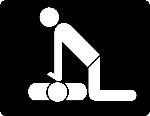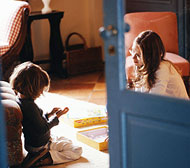 |
| The Amazing Martinis! |
I've never daunted a babysitter. Instead, I've trained them. Since my family needed more from the average sitter, I trained above-average sitters. I've done it over a period of 5 years now, and I thought I'd better share the process because it evolved hit and miss with the help of great sitters and good friends. The ideas came from necessity and we happened on what works. I know that it's going to sound like I'm made of money. I'm not. We're on one income, remember. We just have made this a significant part of budgeting for events. I don't go out much, but whenever I do, I know I'm covered on the homefront. That's priceless!
First step: CPR/First Aid Certification
Whenever we have foster children, our babysitters are required to have CPR and First Aid Certification. This is such a good idea that we Martins have required it even during the few months in the last six years that we've not been fostering.
I made this an easy requirement by calling the American Heart Association and finding an instructor who could come to us, then advertising by word of mouth that it was being offered. The kids who want to babysit for us on a regular basis invest in their skills as a sitter before they even step foot in the door. At the very least, this requirement will weed out the sitters who are more interested in your money than in doing their job.
Second step: On the Job Training
This actually evolved out of necessity: I had some projects that needed doing that I couldn't do well without a little help watching the kids. It turned out so well, I've been doing it ever since.
I have the babysitter come over to babysit when I am home. I pay the sitter half wages for On the Job Training (OJT). The sitter comes over, learns the routines that are vital to the good behavior of my son with autism and my other children, too, and I am there to coach, tweak, and guide the process. If I envision an evening event, the OJT takes place late enough to include the bedtime routine. If I've got to leave on a Tuesday, I have the sitter come learn how to "do Tuesday." It may seem strange to pay a sitter when you are home, but I consider it an investment. I can not tell you how vital this step is. Not only does the sitter learns where you keep everything and how the kids are expected to behave, all the kids benefit from the smooth continuation of their routine. The babysitters are more competent and more confident when the time comes to solo. Plus, the money is good! There's the reward of the money of babysitting without the trials and confusion that babysitting alone can bring!
Third Step: Sometimes, It Takes Two
During certain developmental phases (the quietly-disappearing phase, the I'm-going-to-the-park-alone phase, the meltdown-at-random-intervals phase), I have hired one sitter for my son with autism and then another sitter for the rest of the children. It costs double, but we build it into the budget and if it means a peanut butter and jelly sandwich main course on Friday (or on several Fridays), so be it.
Fourth Step: Back up!
When we confer our Parental Authority Badge, it is conferred. We do not undo it when we get home. If the babysitter has given a time-out, we don't let our children complain about it. We back up the babysitter with statements like, "Did you tell Hannah you were sorry for not obeying her?" or "Oh no! Weren't you embarrassed to be naughty in front of Clara?" Our kids know that if the babysitter has sentenced anyone to a time out or restricted the use of a toy or removed popsicle privileges, mommy and daddy are following through when we get home. So far we've not run into much in the way of overzealousness or other authority problems on the babysitter's part, and any tweaking that needs to be done is handled privately with the sitter, out of earshot of the kids.
Well, then...
That's about it. Four steps and a couple of months of training and you have yourself a few babysitters who are ready for just about anything your family can dish out. Start with quality kids--I prefer the children of large families because of the experience they bring--and help them learn the ropes. Two of my best sitters have gone one to volunteer at an equestrian center for special needs kids because they've learned that kids are kids, no matter what the labels say.




No comments:
Post a Comment